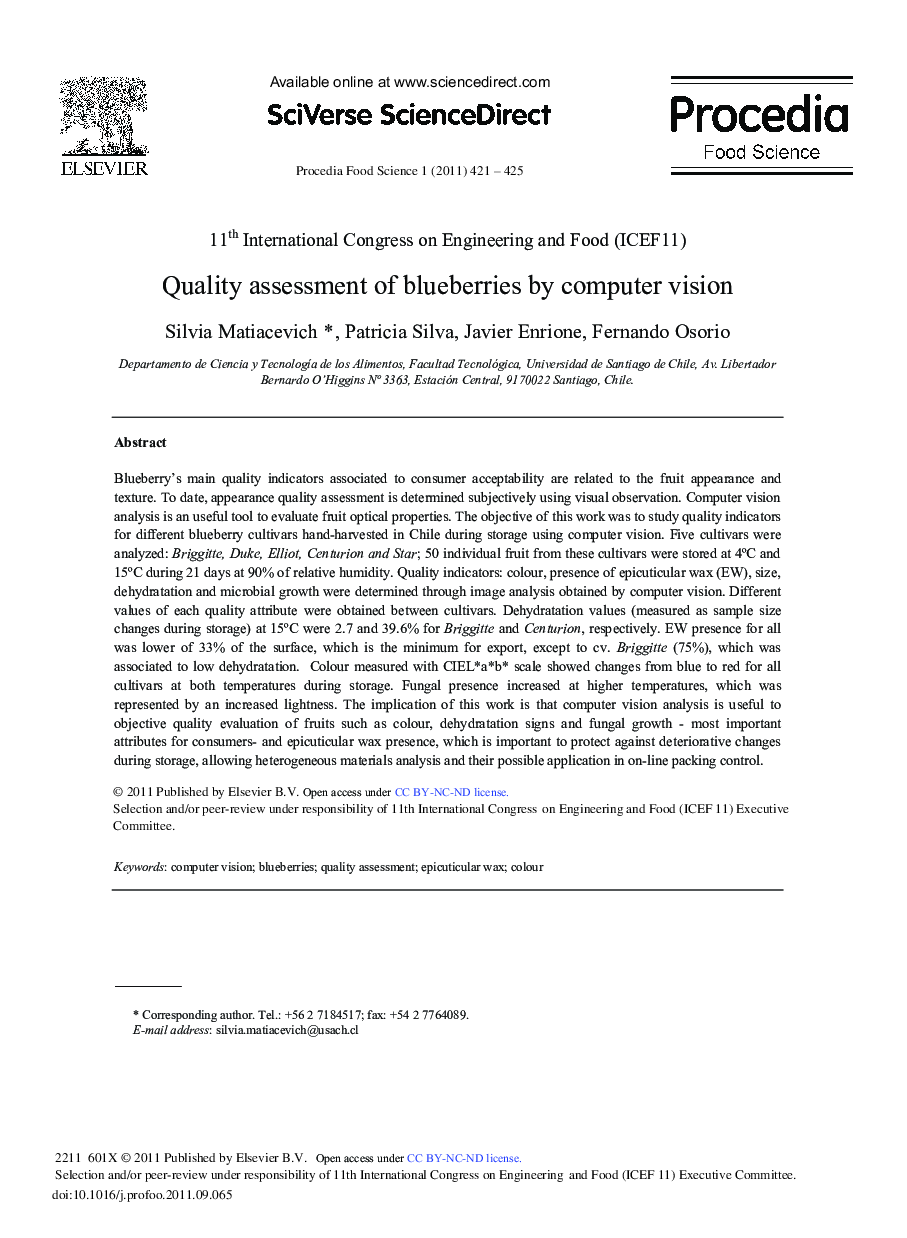| Article ID | Journal | Published Year | Pages | File Type |
|---|---|---|---|---|
| 1264973 | Procedia Food Science | 2011 | 5 Pages |
Blueberry's main quality indicators associated to consumer acceptability are related to the fruit appearance and texture. To date, appearance quality assessment is determined subjectively using visual observation. Computer vision analysis is an useful tool to evaluate fruit optical properties. The objective of this work was to study quality indicators for different blueberry cultivars hand-harvested in Chile during storage using computer vision. Five cultivars were analyzed: Briggitte, Duke, Elliot, Centurion and Star; 50 individual fruit from these cultivars were stored at 4 °C and 15 °C during 21 days at 90% of relative humidity. Quality indicators: colour, presence of epicuticular wax (EW), size, dehydratation and microbial growth were determined through image analysis obtained by computer vision. Different values of each quality attribute were obtained between cultivars. Dehydratation values (measured as sample size changes during storage) at 15 °C were 2.7 and 39.6% for Briggitte and Centurion, respectively. EW presence for all was lower of 33% of the surface, which is the minimum for export, except to cv. Briggitte (75%), which was associated to low dehydratation. Colour measured with CIEL*a*b* scale showed changes from blue to red for all cultivars at both temperatures during storage. Fungal presence increased at higher temperatures, which was represented by an increased lightness. The implication of this work is that computer vision analysis is useful to objective quality evaluation of fruits such as colour, dehydratation signs and fungal growth - most important attributes for consumers- and epicuticular wax presence, which is important to protect against deteriorative changes during storage, allowing heterogeneous materials analysis and their possible application in on-line packing control.
